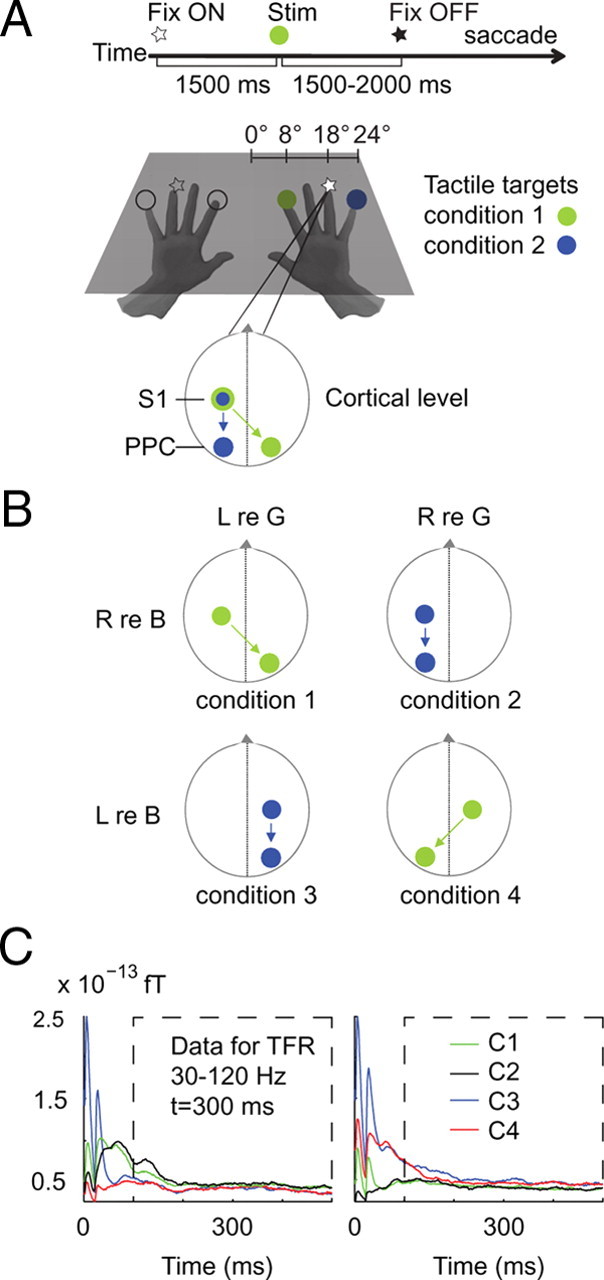Figure 1.

Experimental design. A, Sequence of stimuli and subject instructions. A trial began with fixating a light at the position of the tip of the ring finger of the right or left hand. After a baseline period of 1500 ms, the tactile target was presented to either the index or little finger of the same hand. After a further delay of 1500–2000 ms, the visual fixation light was switched off, instructing the subject to make a saccade to the remembered location of the tactile target. B, Target locations were based on a 2 × 2 factorial design, with factors side (left vs right) and reference frame (gaze vs body). Body-centered lateralization characterizes the power differences for stimuli delivered to the contralateral versus ipsilateral hand. Gaze-centered selectivity compares the power for invisible tactile targets in the contralateral versus ipsilateral visual field. C, Event-related fields at sensors overlaying the left-hand and right-hand somatosensory areas. Colors signify the four conditions (C1 to C4). Stimulus artifacts have disappeared 50 ms after trial onset. Because of the spectral analysis windows, only time-frequency points from 300 ms poststimulus and onward are artifact free.
